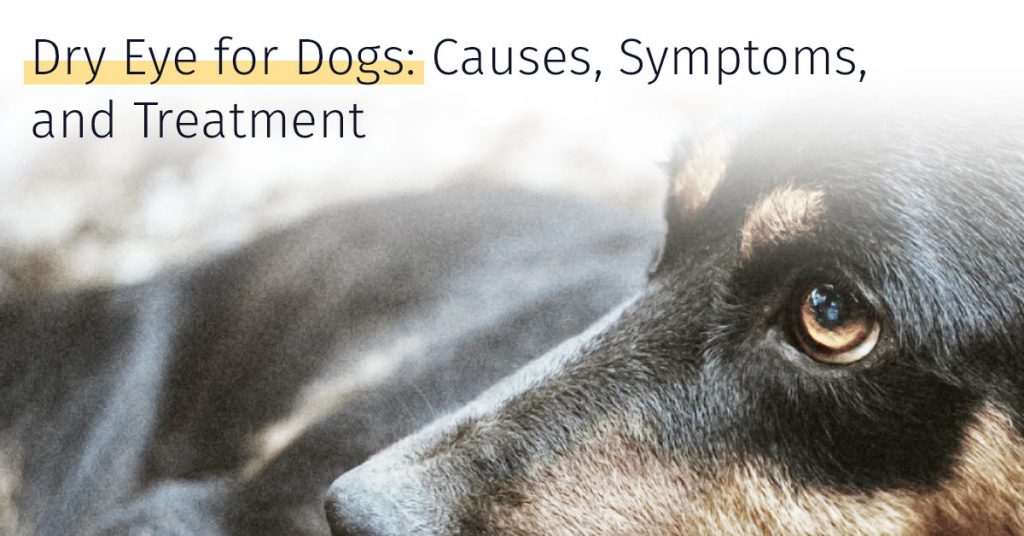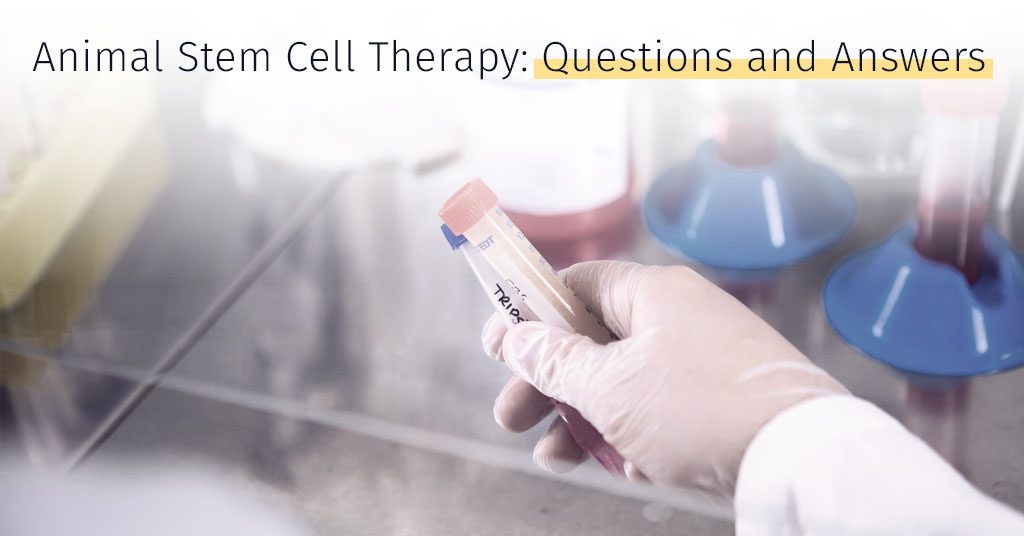
Your dog doesn’t seem to want to open his eyes? They appear thick, red, and swollen, and you notice mucus discharge surrounding the eyes upon closer inspection? There is a big chance it is dry eye syndrome, which is commonly diagnosed in both North America and Europe.
What is Dry Eye Syndrome (DES)
Dry Eye Syndrome (DES) happens to your dog when his tear glands stop producing enough tears. In order to keep them adequately moisturized. In dogs, tears are normally made by the ‘lacrimal gland’ (tear gland) and the glands of the third eyelids.
Necessary to offer both lubrication and nutrition to the cornea, on top of helping remove debris from the eye (dirt), lubrication is vital for your dog’s eye health!
In the case of dry eye syndrome (DES), or more technically Keratoconjunctivitis Sicca (KCS), your dog’s eyes no longer produce this vital lubrication correctly.
Symptoms of Dry Eye for dogs

Also known as Keratoconjunctivitis Sicca (KCS), a case of dry eye for dogs usually isn’t difficult to notice! Your dog’s eyes will usually become red, swollen, and inflamed, and produce an excess of thick, mucousy discharge.
Some dogs might also develop corneal ulceration (open wound on the eye). Which can lead to secondary infections and possibly the loss of the eye.
Chronic (long term) dry eye, or repeated dry eye, can lead to scarring and vision loss.
- Irritated & red eyes
- Eye discomfort & pain
- Squinting or blinking repeatedly
- Lower production of tears
- The dog might keep eyes closed
As with any disorder that can be linked to heredity, some dog breeds are more likely to develop Keratoconjunctivitis Sicca (KCS) than others, suggesting a genetic cause. Some of these breeds include:
- Cavalier King Charles Spaniel
- English Bulldog
- Lhasa Apso
- Pug
- Shih Tzu
- West Highland White Terrier
Brachycephalic breeds (ex. Pug, Boxer) commonly produce another type of dry eye syndrome, focusing on overly excessive tear evaporation (turn to vapor). In both types, the reduced tears produced means less moisturization, inflammation of the cornea, and in severe cases, can lead to vision loss or blinding!
Why Tears are Important
Dogs shouldn’t ‘cry’ in the sense that they are sad, not like a human would, but still produce tears. The cornea and conjunctiva, portions of your dog’s eyes, depend on it! If your dog can’t get a steady supply of moisture to the eyes, it will likely lead to extreme discomfort and eventually, if never treated, a loss of vision completely. Overall tears are responsible for:
- Lubrication
- Nutrition of the cornea
- Flushing debris
- Supply growth factor
- Other corneal defense mechanisms
Causes of Dry Eye for Dogs
The most common cause of Keratoconjunctivitis Sicca (KCS) in dogs is an immune-mediated (body’s immune system reacts to) inflammation of the lacrimal gland, but there are several other possibilities:
- Congenital Disease – underdeveloped or absent lacrimal glands will lead to poor teat production in dogs, and Keratoconjunctivitis Sicca (KCS).
- Infectious Disease – things like Canine Distemper can cause dry eye in dogs, which is one reason you should always maintain your pet’s vaccinations!
- Neurologic Deficiency – a loss of nervous tissue to the eye will result in decreased motor function (inability to blink).
- Endocrine Disease – furthermore, disorders like Hypothyroidism or conjunctivitis can lead to problems with tear production.
- Radiation Therapy – radiation therapy near the eye can damage the eye itself.
- Drug Toxicity – any kind of adverse reaction to a drug your dog was prescribed can sometimes lead to a toxic reaction, causing a problem with your dog’s tear production. Cannabis can often lead to dry eye, which is one of the several reasons the chemical THC should never be given to a dog unless recommended by a veterinarian.
Treating Dry Eye in Dogs

The first step when treating dry eye syndrome (DES) in dogs involves determining the cause. If you don’t know what is causing your dog’s keratoconjunctivitis sicca, treating it is only a temporary solution before the dry eye returns.
Once the cause is determined, anyone of the things below might be used to tread your dog’s dry eye, each depending on the cause. For example, antibiotics will be used to treat bacterial infections. Medical treatments are intended to isolate the cause, treat the cause, re-lubricate your dog’s eyes, and prevent or treat any secondary bacterial infection.
The most important test veterinarians use for determining the exact cause of your dog’s dry eye syndrome, and most often used, involves veterinary doctors examining corneal surface cells under a microscope. They may also use test strips to measure tear production.
List of Other Possible Treatments:
- Artificial teardrops – gel-based artificial teardrops are often the first drug used in order to offer immediate relief, mimicking your dog’s natural tears.
- Acetylcysteine – this is a ‘mucolytic agent’ that can help dissolve that thick mucus buildup resulting from your dog’s Keratoconjunctivitis Sicca (KCS).
- Antibiotics – if your dog’s dry eye syndrome is caused by some sort of bacterial infection, antibiotics will often be prescribed by your veterinarian.
- Corticosteroids – these drugs mimic Cortisol, a hormone naturally produced by the body. These might be administered on a short term basis only, and long term use is discouraged. Corneal ulceration (open sore) is a common result of too much use.
- Pilocarpine – this will help stimulate the parasympathetic nervous system if your dog’s dry eye syndrome is caused by a nervous system problem.
- Surgery for Dry Eye in Dogs – ultimately, if none of the treatments above are effective with your dog’s keratoconjunctivitis sicca (KCS), surgical intervention is an extreme and final consideration. You can discuss surgical alternatives with your veterinarian!
- Lacrimostimulant agents – these are probably the most important treatments on this list, used to help stimulate a poorly functioning lacrimal gland into producing more tears!
If the cause is genetic or chronic, these agents can be prescribed regularly and consistently to treat the problem long term. These are typically safe for your dog’s eyes, and usually given 203 times a day! A veterinary ophthalmologist will give you specific instructions related to the dosage and frequency. If the problem is a genetic condition and permanent, these treatments might be prescribed for life.
Stem Cell Treatment for Dog Dry Eye
Stem Cell Therapy is a safe way of how to treat dog dry eye syndrome with higher efficacy.
Studies and practice show that single stem cell injection can significantly reduce the problem or prevent it forever. In addition, they don’t cause negative side effects. Moreover, afterward, dogs may not need additional medications.
While the dog is under anesthesia cells are injected into the lacrimal glands to restore normal production of tears. Also, to reduce the inflammatory response and bring back the cornea and surrounding tissues to a more normal state.
Stem Cell Therapy is also commonly used to help with arthritis, soft tissue injuries, kidney problems, boost recovery after surgeries, and other issues.
If you are looking for advice and a solution to end your dog suffering contact us!



